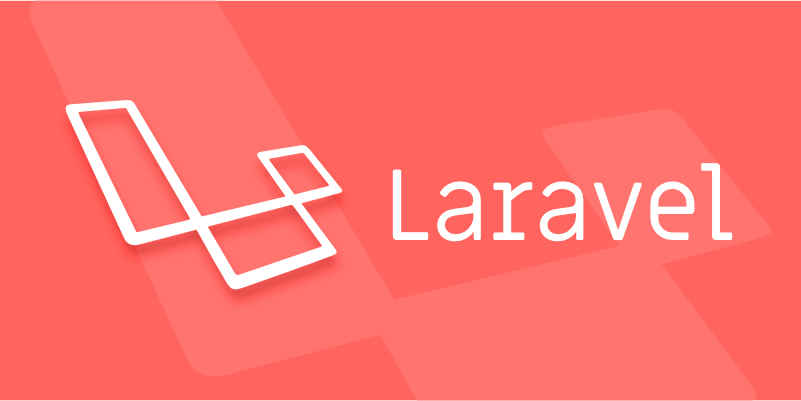How to encrypt and decrypt data in Laravel?
Laravel uses Crypt facade to implement data encryption and decryption. First, ensure that there is a valid APP_KEY in the .env file and generate it through php artisan key:generate; 1. Encrypt strings using Crypt::encryptString(), such as $encrypted = Crypt::encryptString('Hello, this is secret!'); 2. Decrypt data using Crypt::decryptString($encrypted) and catch DecryptException with try-catch; 3. In the model, store and decrypt readings can be automatically encrypted through accessors and modifiers, such as setSsnAttribute and getSsnAttribute methods; 4. Be careful not to use encryption to store passwords. Hash::make() should be used. Once APP_KEY changes the original encrypted data, it will not be decrypted. Avoid encrypting a large amount of data to reduce overhead. File encryption requires encrypting content before storing. Summary: Laravel provides secure and convenient encryption services through the AES-256-CBC algorithm, and reasonably use the Crypt facade and perform exception handling and key management to ensure data security.

Laravel provides a simple and secure way to encrypt and decrypt data using its built-in encryption service , which leverages OpenSSL with the AES-256-CBC cipher by default. This ensures that sensitive data (like API keys, user info, or configuration values) can be safely stored or transmitted.

Here's how you can encrypt and decrypt data in Laravel:
✅ 1. Use Laravel's Crypt Facade
Laravel's Crypt facade provides an easy interface for encryption and decryption. It requires that your app has a valid APP_KEY set in the .env file (which is generated automatically during installation).

Make sure your .env contains something like:
APP_KEY=base64:your-random-base64-encoded-string
You can generate it using:

php artisan key:generate
✅ 2. Encrypt Data
To encrypt data, use Crypt::encrypt() or Crypt::encryptString() .
? Use
encryptString()for strings to avoid serialization issues.
use Illuminate\Support\Facades\Crypt; $encrypted = Crypt::encryptString('Hello, this is secret!');
This returns an encrypted string that looks like:
eyJpdiI6Inl...
You can store this in a database or session safely.
✅ 3. Decrypt Data
To decrypt, use Crypt::decryptString() (for strings):
try {
$decrypted = Crypt::decryptString($encrypted);
echo $decrypted; // Output: Hello, this is secret!
} catch (Illuminate\Contracts\Encryption\DecryptException $e) {
// Handle decryption failure (eg, tampered data, wrong key)
echo 'Decryption failed!';
}⚠️ Always wrap decryption in a try-catch block because invalid or tampered data will throw a
DecryptException.
✅ 4. Example: Storing Encrypted Data in Database
Suppose you have a users table with an ssn (Social Security Number) field you want to encrypt.
In your model (optional):
use Illuminate\Support\Facades\Crypt;
class User extends Model
{
// Don't store raw SSN
public function setSsnAttribute($value)
{
$this->attributes['ssn'] = Crypt::encryptString($value);
}
public function getSsnAttribute($value)
{
try {
return Crypt::decryptString($value);
} catch (\Illuminate\Contracts\Encryption\DecryptException $e) {
return 'Decryption failed';
}
}
}Now when you save:
User::create([
'name' => 'John Doe',
'ssn' => '123-45-6789', // Automatically encrypted
]);When you read:
$user = User::first(); echo $user->ssn; // Automatically decrypted → "123-45-6789"
?️ Security Notes
- Never encrypt passwords — use
Hash::make()instead. - The encryption uses your
APP_KEY. If it changes, all previously encrypted data becomes undecryptable. - Avoid encrypting large amounts of data — encryption adds overhead and storage size.
- For encrypting files, consider encrypting the file content before saving and decrypting after reading.
? Manual Encryption Without Facade (Optional)
You can also use the service container directly:
app('encryptter')->encryptString('data'); app('encrypter')->decryptString($encryptedData);
✅ Summary
| Task | Code |
|---|---|
| Encrypt string | Crypt::encryptString('secret')
|
| Decrypt string | Crypt::decryptString($encrypted)
|
| Handle errors | Use try/catch
|
| Auto encrypt/decrypt in models | Use accessors/mutators |
Basically, Laravel makes encryption simple and secure out of the box — just use Crypt::encryptString() and Crypt::decryptString() with proper error handling. Keep your APP_KEY safe and never expose decrypted data unnecessarily.
The above is the detailed content of How to encrypt and decrypt data in Laravel?. For more information, please follow other related articles on the PHP Chinese website!

Hot AI Tools

Undress AI Tool
Undress images for free

Undresser.AI Undress
AI-powered app for creating realistic nude photos

AI Clothes Remover
Online AI tool for removing clothes from photos.

Clothoff.io
AI clothes remover

Video Face Swap
Swap faces in any video effortlessly with our completely free AI face swap tool!

Hot Article

Hot Tools

Notepad++7.3.1
Easy-to-use and free code editor

SublimeText3 Chinese version
Chinese version, very easy to use

Zend Studio 13.0.1
Powerful PHP integrated development environment

Dreamweaver CS6
Visual web development tools

SublimeText3 Mac version
God-level code editing software (SublimeText3)
 How to set environment variables in PHP environment Description of adding PHP running environment variables
Jul 25, 2025 pm 08:33 PM
How to set environment variables in PHP environment Description of adding PHP running environment variables
Jul 25, 2025 pm 08:33 PM
There are three main ways to set environment variables in PHP: 1. Global configuration through php.ini; 2. Passed through a web server (such as SetEnv of Apache or fastcgi_param of Nginx); 3. Use putenv() function in PHP scripts. Among them, php.ini is suitable for global and infrequently changing configurations, web server configuration is suitable for scenarios that need to be isolated, and putenv() is suitable for temporary variables. Persistence policies include configuration files (such as php.ini or web server configuration), .env files are loaded with dotenv library, and dynamic injection of variables in CI/CD processes. Security management sensitive information should be avoided hard-coded, and it is recommended to use.en
 How to make PHP container support automatic construction? Continuously integrated CI configuration method of PHP environment
Jul 25, 2025 pm 08:54 PM
How to make PHP container support automatic construction? Continuously integrated CI configuration method of PHP environment
Jul 25, 2025 pm 08:54 PM
To enable PHP containers to support automatic construction, the core lies in configuring the continuous integration (CI) process. 1. Use Dockerfile to define the PHP environment, including basic image, extension installation, dependency management and permission settings; 2. Configure CI/CD tools such as GitLabCI, and define the build, test and deployment stages through the .gitlab-ci.yml file to achieve automatic construction, testing and deployment; 3. Integrate test frameworks such as PHPUnit to ensure that tests are automatically run after code changes; 4. Use automated deployment strategies such as Kubernetes to define deployment configuration through the deployment.yaml file; 5. Optimize Dockerfile and adopt multi-stage construction
 What is Configuration Caching in Laravel?
Jul 27, 2025 am 03:54 AM
What is Configuration Caching in Laravel?
Jul 27, 2025 am 03:54 AM
Laravel's configuration cache improves performance by merging all configuration files into a single cache file. Enabling configuration cache in a production environment can reduce I/O operations and file parsing on each request, thereby speeding up configuration loading; 1. It should be enabled when the application is deployed, the configuration is stable and no frequent changes are required; 2. After enabling, modify the configuration, you need to re-run phpartisanconfig:cache to take effect; 3. Avoid using dynamic logic or closures that depend on runtime conditions in the configuration file; 4. When troubleshooting problems, you should first clear the cache, check the .env variables and re-cache.
 Explain Laravel Eloquent Scopes.
Jul 26, 2025 am 07:22 AM
Explain Laravel Eloquent Scopes.
Jul 26, 2025 am 07:22 AM
Laravel's EloquentScopes is a tool that encapsulates common query logic, divided into local scope and global scope. 1. The local scope is defined with a method starting with scope and needs to be called explicitly, such as Post::published(); 2. The global scope is automatically applied to all queries, often used for soft deletion or multi-tenant systems, and the Scope interface needs to be implemented and registered in the model; 3. The scope can be equipped with parameters, such as filtering articles by year or month, and corresponding parameters are passed in when calling; 4. Pay attention to naming specifications, chain calls, temporary disabling and combination expansion when using to improve code clarity and reusability.
 PHP development user permission management monetization PHP permission control and role management
Jul 25, 2025 pm 06:51 PM
PHP development user permission management monetization PHP permission control and role management
Jul 25, 2025 pm 06:51 PM
User permission management is the core mechanism for realizing product monetization in PHP development. It separates users, roles and permissions through a role-based access control (RBAC) model to achieve flexible permission allocation and management. The specific steps include: 1. Design three tables of users, roles, and permissions and two intermediate tables of user_roles and role_permissions; 2. Implement permission checking methods in the code such as $user->can('edit_post'); 3. Use cache to improve performance; 4. Use permission control to realize product function layering and differentiated services, thereby supporting membership system and pricing strategies; 5. Avoid the permission granularity is too coarse or too fine, and use "investment"
 How to create a helper file in Laravel?
Jul 26, 2025 am 08:58 AM
How to create a helper file in Laravel?
Jul 26, 2025 am 08:58 AM
Createahelpers.phpfileinapp/HelperswithcustomfunctionslikeformatPrice,isActiveRoute,andisAdmin.2.Addthefiletothe"files"sectionofcomposer.jsonunderautoload.3.Runcomposerdump-autoloadtomakethefunctionsgloballyavailable.4.Usethehelperfunctions
 How to build a log management system with PHP PHP log collection and analysis tool
Jul 25, 2025 pm 08:48 PM
How to build a log management system with PHP PHP log collection and analysis tool
Jul 25, 2025 pm 08:48 PM
Select logging method: In the early stage, you can use the built-in error_log() for PHP. After the project is expanded, be sure to switch to mature libraries such as Monolog, support multiple handlers and log levels, and ensure that the log contains timestamps, levels, file line numbers and error details; 2. Design storage structure: A small amount of logs can be stored in files, and if there is a large number of logs, select a database if there is a large number of analysis. Use MySQL/PostgreSQL to structured data. Elasticsearch Kibana is recommended for semi-structured/unstructured. At the same time, it is formulated for backup and regular cleaning strategies; 3. Development and analysis interface: It should have search, filtering, aggregation, and visualization functions. It can be directly integrated into Kibana, or use the PHP framework chart library to develop self-development, focusing on the simplicity and ease of interface.
 How to implement a referral system in Laravel?
Aug 02, 2025 am 06:55 AM
How to implement a referral system in Laravel?
Aug 02, 2025 am 06:55 AM
Create referrals table to record recommendation relationships, including referrals, referrals, recommendation codes and usage time; 2. Define belongsToMany and hasMany relationships in the User model to manage recommendation data; 3. Generate a unique recommendation code when registering (can be implemented through model events); 4. Capture the recommendation code by querying parameters during registration, establish a recommendation relationship after verification and prevent self-recommendation; 5. Trigger the reward mechanism when recommended users complete the specified behavior (subscription order); 6. Generate shareable recommendation links, and use Laravel signature URLs to enhance security; 7. Display recommendation statistics on the dashboard, such as the total number of recommendations and converted numbers; it is necessary to ensure database constraints, sessions or cookies are persisted,







